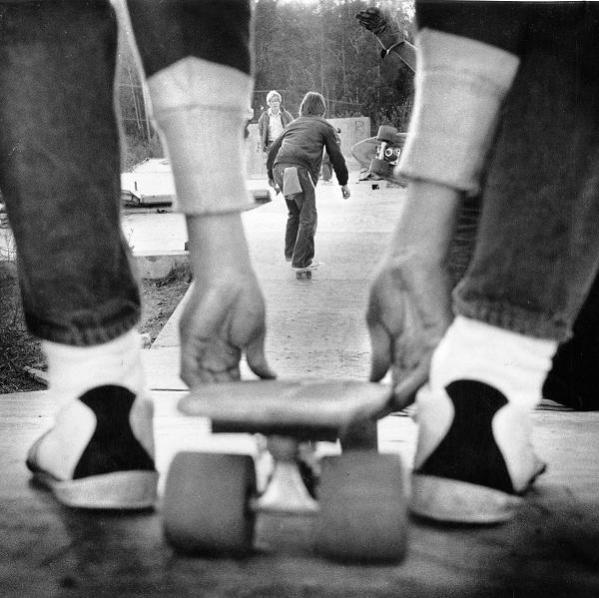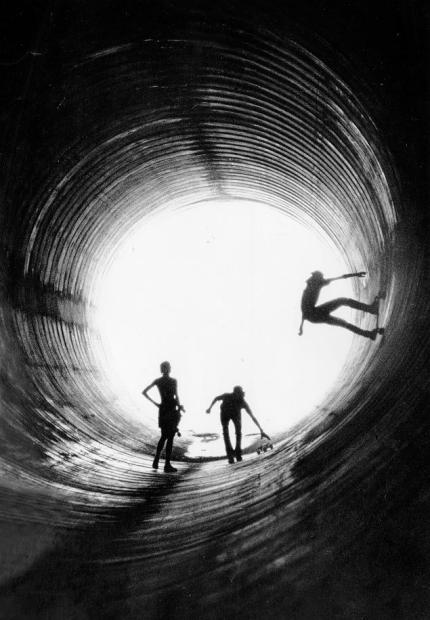“Epoch Bits” is Havoc TV’s bygone surf, skate, and music column. Every Wednesday, we dive deep into the depths of these radical subcultures that forged the way for those of us raised on a surf and/or skateboard.
December 4, 1976 - Gary Fong of the San Francisco Chronicle hangs with some local young skaters.
In these photos from '76, journalist Gary Fong captures the young skate climate in San Francisco. According to the caption:= of the first photo: “Kids skate down makeshift ramp. They go down one side, up the other, make a ‘kick turn’ at the top, and wind back down.” Vans shoes hadn’t exploded on the skate scene yet, so the kid in the foreground stole his footwear from Presidio Bowling Center probably. In the second photo skateboarders in San Francisco skate on "The Pipe," a location kept secret so police wouldn't shut it down.
https://vimeo.com/49425260
December 23, 1994 - Mark Foo drowns at Maverick's.
In what became the world's most famous wipeout, hawaiian big-wave surfer, Mark Foo died after taking what appeared to be a routine spill midway down a 15-footer at Maverick's. The break became a mainstream media sensation, with coverage in the New York Times, Rolling Stone, Outside, Spin, Dateline, and MTV Sports.
https://www.youtube.com/watch?v=F7SzXKlvkfc
December 1989 - Tim Simenon and Stacy Peralta release "Attack"
This was one of a small series of videos produced by Lol Creme under the name “Videola”. There were a lot of snooty comments about the production of this skate flick, but after rewatching it today, seems like a seminal piece relevant to the time it was made.
December 22, 1943 - The Brown/Cross tale at North Shore.
On the afternoon of December 22, 1943, Woody Brown drove from Honolulu to the North Shore with teenage surfer Dickie Cross, and the two paddled out at Sunset Beach, where the waves looked to be 10 feet. The swell came up quickly, and a half-hour later the two surfers found themselves paddling out, more than a half-mile from the beach, with 25-foot waves exploding in their wake. The North Shore was then lightly inhabited, and nobody had seen the two surfers enter the water. The sun was getting low and the surf was still building when Brown told Cross they'd have to paddle three miles down the coast to Waimea Bay, where they might be able to get in through a deep-water channel. But the channel was impassable. Cross made a break for the beach, was caught by a set of 40-foot waves, and never seen again. Brown lost his board, but was unharmed; a few minutes later he also made break for shore, got rolled by a dozen or more breaking waves, then washed up into shallow water, and was dragged to safety by a group of soldiers who happened to be on the beach. Brown never again surfed the North Shore, and for years the harrowing Brown-Cross tale kept surfers away from Waimea.
https://vimeo.com/50036318
December 1975 - The birth of the "Backside Attack" at Pipeline.
Up until the winter of '75 Pipeline was infamously known to be more challenging for regular-footed surfer charging the left-breakiung waves backside. Howver a small group of regular-footers took to Pipeline in December 1975 and closed the performance gap between the regular and goofy-footed surfers. Gerry Lopez recounts the events describing the usually fickle Pipeline surf as breaking in a near-mechanical repetition for more than two weeks. "Just one swell after another," Lopez said, "and it gave those guys enough time to really figure the place out."



